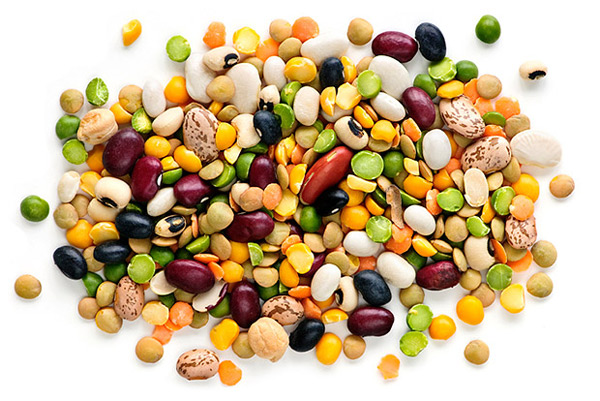
A new study from the University of Minnesota found that the fiber in beans can keep you feeling surprisingly full. Researchers asked men and women to test two “meatloaf” lunches, made from either beef or beans. Both meals provided an equal number of calories and fat grams, but differed in protein and fiber, with the meat loaf providing 26 grams of protein and 3 grams of fiber, and the bean version 17 grams of protein and 12 grams of fiber. Despite the beef meatloaf’s higher protein content, three hours after eating, both groups reported similar feelings of fullness and satisfaction.
This bonus fiber has been proven to help in slimming down: each additional gram of fiber consumed can lead to an extra quarter-pound of weight loss, a 2009 study found. Other research shows that every gram of fiber we eat essentially “cancels out” about seven calories, because fiber bonds to some of the calories consumed, and prevents them from being absorbed into the blood.
| These are just a few popular beans: * kidney beans * soy beans * garbanzo beans * adzuki beans * lima beans * red lentils * green lentils * brown lentils * black beans * black eyed peas * broad beans * red beans * butter beans * fava beans * great northern beans * haricot beans * mung beans * navy beans * pinto beans * yellow split peas * green split peas * white beans |
5 Reasons Why Bean Serve a Better Option
- Less expensivee (extra lean ground beef costs about $9 a pound compared to just $1 for a can of beans) and better for the environment, using beans in place of meat is also a major time-saver.
- They serve double duty: beans provide both protein and fiber-rich carbohyrdrates and can be used in place of animal protein, or as a replacement for traditional starches, like rice, corn, or potatoes.
- Slash Hundreds of Excess Calories: Pureed whole beans or bean flours, like fava, black, or white bean flour can make ideal bases or thickeners for creamy sauces and soups, and can be used in place of whole milk or cream. In many dishes mashed beans can also take the place of cheese.
- Low in Fat: Most beans are about 2 to 3 percent fat, and contain no cholesterol, unless they’re processed or prepared with other ingredients, such as lard.
- Have a low glycemic index: The GI score of beans ranges from 10 to 40 for a serving of about a 1/2-cup (If a food has a low GI – less than 55 — it will affect your blood sugar less). Dried chickpeas come in the lowest at 10, while kidney beans and lentils score 29. Black beans have a GI of 30, canned chickpeas are at 38 and baked beans come in at 40. Here’s an added bonus: Eating beans with foods higher on the GI scale will even out the effect of the less nutritious foods on your blood sugar, according to the American Diabetes Association.Beans contain a beautiful blend of complex carbohydrates and protein. Because of this, beans are digested slowly, which helps keep blood glucose stable, and may curtail fatigue and irritability.
The biggest advantage with beans is , they can be incorporated into a main dish (chili), side dish (rice and beans), appetizer (soup) or snack (dip). It’s easy to be creative when you have kidney beans, pinto beans, black beans, lima beans, black-eyed peas, garbanzo beans (chickpeas), split peas and lentils in your pantry. Take advantage of their various shapes, sizes and colors when planning meals.